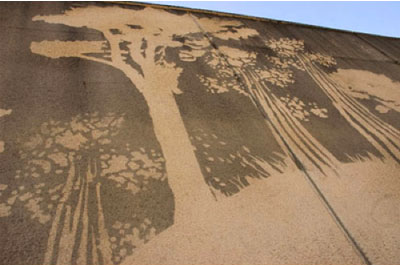

Photography courtesy of Reverse Graffiti Project

Let’s face it. For every movement, there’s a counter-movement — even in the graffiti world. It appears that the ubiquitous spirit of graffiti in urban areas has finally spawned a new generation of taggers, with one major difference, however: these new deviants prefer to wield cleaning materials rather than cans of spray paint.
In past decade, Reverse Graffiti (an art form that removes dirt, dust, and decay rather than adding paint) has experienced something of a mass migration across the world. Crafty examples can be found on everything from filthy car windows to highway tunnels and exit ramps. Huge projects along with small outbursts have exacted equal exposure in places like San Francisco, São Paulo, the UK, Israel, Germany, and Amsterdam. Though the majority of clean graffiti artists cite environmental concerns and/or political issues as their muse, even big-shot companies like Microsoft and Smirnoff have gotten in on the action, sensing a hip new method of advertisement.
The movement, which traces back to British artist Paul “Moose” Curtis, the self-titled “Professor of Dirt”, is currently enticing new disciples in South Africa. Martin Pace, a student living in Durban, modified Moose’s technique in his own neighborhood for a final school project. Using a metal scrubbing brush instead of a high-pressure water hose, Pace etched a fifty-five-foot timeline of Westville’s architecture into a freeway wall. Since then, Pace has recruited a few of his buddies, formed a group called Dutch Ink, and continues to hit the streets, leaving beautiful organic murals behind.




 Facebook
Facebook Permalink
Permalink Digg
Digg Reddit
Reddit LinkedIn
LinkedIn StumbleUpon
StumbleUpon Tumblr
Tumblr

